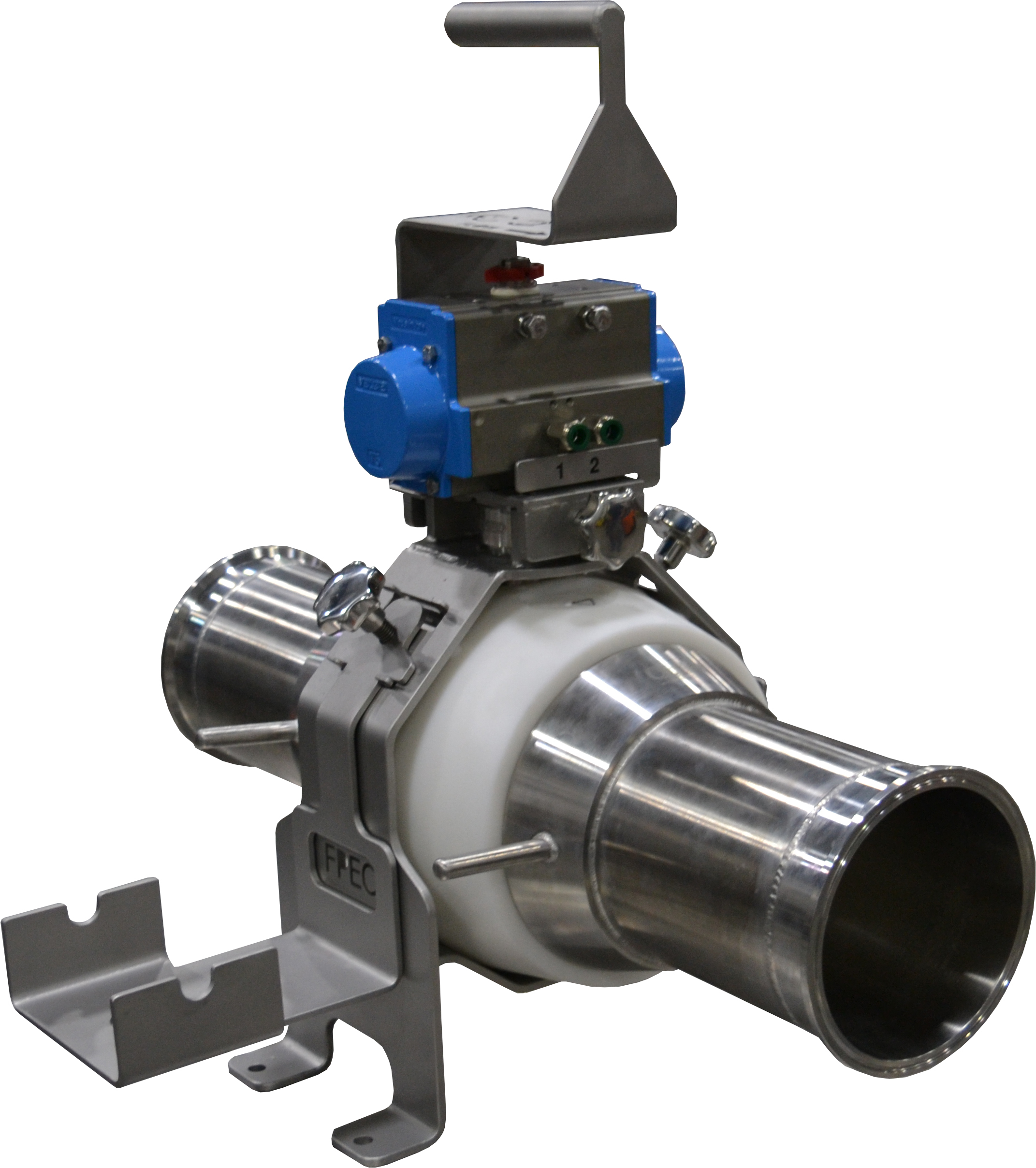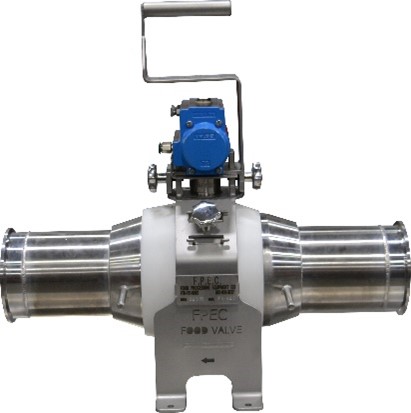The vacuum conveying systems in the food and beverage industry rely on valves that are lightweight, sanitary, and easy to maintain. Traditional options that rely on rubber seals, gaskets, or O-rings can introduce failure points, complicate cleaning, and add to long-term costs.
The FPEC food valve solves these challenges with a patent-pending valve design that eliminates the need for seals or gaskets altogether.
Trustworthy Seal Performance Without O-Rings or Gaskets
Conventional valves in similar applications use rubber seals that can leak or deteriorate over time. Demanding food-processing environments and harsh wash-down conditions place further strain on these outdated solutions. When they eventually fail, processors can face downtime and contamination risks.
The FPEC food valve solves these problems with a precision-machined interference fit. Rubber seals are eliminated from the equation to ensure long-term reliability. Lightweight construction and tool-less disassembly make for a ball valve that's easier to clean and stands up to the most rigorous applications.

Technical Specifications of the FPEC Food Valve
Our food valve has been specially engineered for vacuum applications in sanitary environments, offering processors a solution that's durable, reliable, and easy to use.
Your operations stand to benefit from the following high-performance features:
- Innovative patent-pending ball valve design
- No gaskets or seals while still supporting up to 28"
- Hg vacuum pressure
- Standard models available in 4" and 6" and custom sizes to meet your requirements
- Combination of 304 stainless steel and resistant polymer components for long-lasting durability
- 40% lighter than stainless steel valves
- Valve can be taken apart in less than a minute for rapid cleaning
- Maintains reliable vacuum pressure
- Manual or pneumatic operation
FPEC's engineering experts have produced a unique ball valve design that enhances ease of operation, control, and durability for food-processing clients with high standards.

Advantages in Food and Beverage Industry Applications
The unique advantages of our food valve make it an excellent choice for processors looking to reduce downtime, facilitate sanitation, and improve process efficiency. They include:
- Better hygiene: Lack of rubber components reduces odor and residue concerns for compliance with dairy and food industry standards.
- Faster sanitation: Rapid disassembly and manageable materials allow for effortless wash-downs between production runs.
- Long-term reliability: American-made construction with stainless steel and polymer components to ensure lasting performance.
- Convenient maintenance: Lightweight construction permits easy handling by operators to streamline maintenance procedures.
- Flexible integration: Seamlessly fits a wide range of standard vacuum systems across food- and beverage-processing applications.
Your operation can take advantage of these outstanding attributes to transform how you use, clean, and maintain your valves.

Forward-Thinking Solutions for the Food Industry
FPEC drives innovation in the food and beverage industry with precision-engineered, American-built equipment. Throughout our more than 65 years in the industry, we've developed a remarkable number of technological advancements.
Our precision food valve is the latest example of how we continually change the industry landscape. It reflects the same forward-thinking approach that has made FPEC a trusted partner to processors nationwide for decades.

Videos
Playlist

Success in Every Story
Hear about how FPEC equipment has helped our customers across the country.
FPEC equipment well designed and built to last. Maintenance on FPEC equipment is easier and we have less downtime with their equipment.
When i toured the FPEC plant I was amazed the craftsmanship and was surprised how large their facility is.
FPEC surprised me that they could not only build the equipment but also they build their own controls for everything, it makes it was easier to start things up.
FPEC tumblers really pick up marination!! We have great results using these tumblers.
FPEC solved my product flow issue, they designed a layout that moves my product smoothly thru process.
Implement the Latest Ball Valve Technology in Your Line
FPEC's food valve does away with troublesome seals and gaskets without compromising vacuum performance. You can enjoy safer, more sanitary, and more reliable performance with our one-of-a-kind, patent-pending design.
Contact our team today to learn more about how the FPEC food valve can upgrade your processes. We'll match you with the right specifications and sizing to suit your intended application perfectly.
